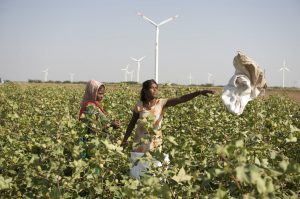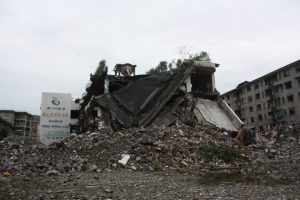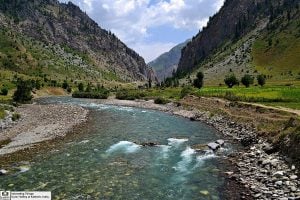As tensions rose between India and Pakistan after a recent terrorist attack on an Indian Army contingent, focus shifted to the Indus Waters Treaty. As Indian commentators asked for the scrapping, or suspension of the treaty, and the Indian Prime Minister is reported to have said, “Both blood and water cannot flow,” anxiety increased in Pakistan. Pakistan is the downstream riparian to India, and is critically dependent on the Indus, Chenab and Jhelum – all of which flow through India – for its freshwater resources.
So far, though, India has chosen to do little on the Indus Waters Treaty beyond suspending fresh meetings between the Indus Water Commissioners and suggesting it will utilise its water storage rights under the treaty better.
See: Indus Waters Treaty rides out latest crisis
See: India suspends Indus commissioners’ meetings
Mirza Asif Baig, Pakistan’s Indus Water Commissioner, said that India would avail all the opportunities provided by the treaty to develop its hydropower and agricultural projects to maximise its benefits. “If the projects conform to the design and operational criteria specified in the treaty Pakistan cannot object on those.”
However, he added, “We see a persistent attitude of India that it designs projects in a manner as if the treaty does not specify any design and operational restrictions and tries to justify such designs on the basis of site conditions and maximisation of benefits.”
Giving an example of the Kishanganga case, Baig said, “The Court of Arbitration in Kishanganga’s case has clearly held that absolute optimisation of benefits is not permitted by the treaty; India can optimise the projects only under the regulatory constraints of the treaty.”
But India being the upper riparian and an angry one at that can tamper with the water, conceded Khalid Mohtadullah, Pakistan’s top water expert.
And if India does take the drastic step of “bottling up the river water to prevent it from flowing downstream, Pakistan could face utter devastation,” explained Michael Kugelman, a senior associate at the Washington DC based Woodrow Wilson Center.
However, Mohtadullah, also a senior advisor to the Global Water Partnership (GWP) and International Water Management Institute (IWMI), said Pakistan need not buckle under the pressure [referring to threats of revoking the Indus Water Treaty] and give its water rights away. “India has gone on a rampage for nothing,” he added.
Agreeing with Mohtadullah, Baig explained, “The IWT deals with only the matters related to sharing of waters of the Indus basin between India and Pakistan. The treaty insulates itself from all the external matters including the dispute over Kashmir. Hence the present attitude of India is clearly against the treaty’s provisions.”
“It is hoped that India would realise that fair and honest implementation of the treaty is in its own interest. Respecting Pakistan’s rights and honouring its obligation would be beneficial for the peace and prosperity of the region,” Baig told the thethirdpole.net. He was in Washington where he had gone on an already scheduled meeting with the World Bank officials.
And while India can stop the water; it will take time.
“It would take at least a few years for India to create enough storage to prevent water from flowing downstream to Pakistan,” agreed Kugelman and, therefore, Pakistan would have time to adjust.
“India cannot stop water in a few weeks or months. It takes years to build infrastructure that will stop, reduce and/or divert water,” agreed geographer and water conservation expert Simi Kamal. She hoped sanity will prevail before that stage is reached but added, “To face the possibility of reduced or blocked flows in the Indus system, we have to plan to manage with less water in the long run.”
The imminent threat has also provided a rude nudge to Pakistan to wake up from its complacent slumber, do a bit of introspection to take its water resource management more seriously. It also gives an opportunity to experts to question the government whether it has a contingency plan ready if such an eventuality arises.
“Every drop we store is a drop saved,” emphasized Mohtadullah, adding, “Then if such shocks arise, Pakistan is better prepared to absorb them. Irrespective of the current situation, we need to make our water use in agriculture efficient, through improved water management,” he said, referring to the fact that 95% of water is used for irrigation, an unsustainable proportion.
Unfortunately there is little new thinking in the government on how to tackle the crisis.
Mohtadullah suggested Pakistan could grow crops other than sugarcane and rice (both of which need a lot of water), appropriately zone its agriculture so that the right crops are grown on the right soil in optimum environmental conditions, and consider moving towards precision agriculture based on scientifically sound research. “The water saved thus can then be diverted to the parched areas like the lower reaches of Sindh, southern Punjab and eastern Balochistan to alleviate poverty,” he said.
But most importantly, said Mohtadullah, the need of the hour was storage. “In the form of field storages (ponds), small dams, big dams, all kinds of dams and everywhere,” he said.
“We are letting a lot of water – beyond the environmental flows necessary to keep the rivers healthy – go to waste,” he said.
No major dams have been constructed in Pakistan since the Tarbela in 1976. Along with Mangla the two major reservoirs in the Indus basin store only 14 million acre feet (MAF) of the 145 MAF that flows through Pakistan annually, and that too only for 30 days. The international standard is 120 days.
According to a 2015 IMF report Pakistan’s demand for water is on the rise and is projected to reach 274 MAF by 2025, while supply is expected to remain stagnant at 191 MAF, resulting in a demand-supply gap of approximately 83 MAF. “The single biggest reason for the drastic reduction in our per capita availability of water is our runway population growth,” pointed out environmentalist Shafqat Kakakhel, who has served as the deputy executive director of the UN Environment Programme (UNEP) and as UN Assistant Secretary General.
At present the country’s population is estimated to be around 190 million. By 2030 it will grow to 244 million, and by 2100, Pakistan’s population is projected at 364 million, states the World Population Prospects 2015. With a rising population the demand is going to increase.
Pakistan is already a water-desperate country, said Kugelman. According to Ghulam Rasul, the director general of the Pakistan Meteorological Department (PMD), it will become water scarce by 2025. In Pakistan water availability per person annually is just 1,017 cubic metres, dangerously close to 1,000 cubic metres under which limit a country is considered water scarce.
“Reductions of water from its chief water source could amount to a nightmare scenario. Farmers already struggling with the realities of a disappearing Indus in Sindh could find themselves without water at all, for example,” pointed out Kugelman.
“In an ideal world, the mere threat of shutting off the tap would prompt the Pakistani political leadership to take drastic measures to safeguard its precarious water security – such as by developing new pricing plans that penalise consumers for using too much water, rolling out plans to subsidise water-saving drip irrigation, and so on,” said Kugelman. But he concluded, “The reality is that in Pakistan, I imagine, the response will simply be angry words and threats issued to India, with little introspection about what Pakistan can do to make itself less vulnerable to India’s water machinations.”

![<p>The Shigar, a tributary to the Indus, winds through Skardu [image by Zofeen T Ebrahim]</p>](https://dialogue.earth/content/uploads/2016/07/IMG_3883-300x200.jpg)





